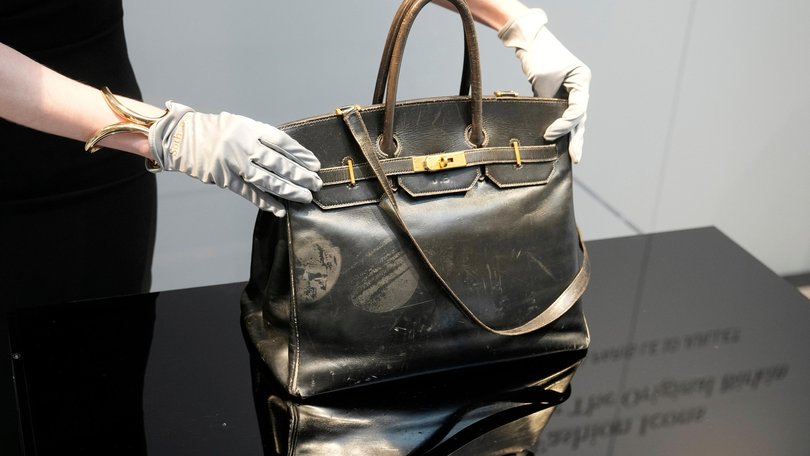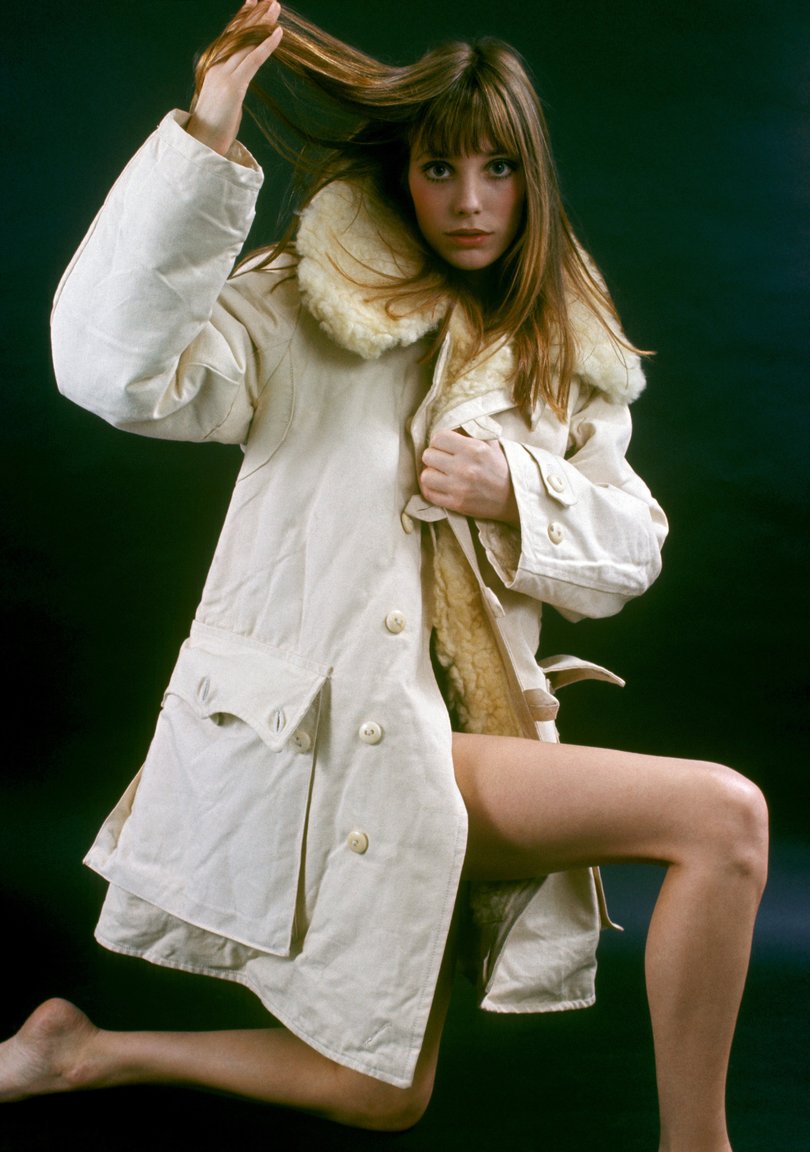THE WASHINGTON POST: Jane Birkin’s original Birkin just sold for $15 million. Is this it-girl inflation?

The late Jane Birkin’s original Birkin bag — the prototype of the now-famous purse that was designed and named for the actress and singer, and which has since become an international icon of extravagant wealth — sold for a whopping €8,582,500 ($15m) at auction in Paris.
Bidding started at an outrageous €1.3m, and the auctioneer described it as “the most famous bag of all time.” Only approved bidders were permitted to take part, and the estimate was provided by request only.
In an email before the auction, a spokesperson compared the bag’s “dazzling provenance” to Princess Diana’s black-sheep sweater, which the house sold in 2023 for $US1.1m —($1.67m) 14 times its high estimate of $US80,000 ($122,000)
Sign up to The Nightly's newsletters.
Get the first look at the digital newspaper, curated daily stories and breaking headlines delivered to your inbox.
By continuing you agree to our Terms and Privacy Policy.The price climbed past €2m and then 3 million within minutes. When the price reached €4m, several attendees could be heard gasping. The lot stalled at €5m, then briskly spiked by half-million increments. When it reached €6m, the room broke into applause. After a tense few minutes, the bid sat at €7m.
Gasps and applause were heard again, and by 10.28am, the auctioneer had hammered down the price for the winner, who had bid by phone.
A tuxedoed bidder in aviator sunglasses stood up and filmed the room, his white paddle looking like a sad mark of surrender.
While both Sotheby’s and Christie’s have been in the business of selling Birkins and other high-end handbags for many years now, the shape of the specimen was far from like-new or even gently used.
“Worn from 1985 to 1994, this bag displays general wear consistent with near-daily use over almost nine years,” the condition report read.
“The black Box leather shows marks, with a pronounced and uniform patina across the entire bag, especially visible on the flap, the handles, and the pierced lower corners.
Scratches, surface scuffs, and signs of use are present on all sides.” There are “visible traces” of two stickers Birkin had put on the bag, both for humanitarian organisations, “leaving discoloured imprints on the leather.” The zipper no longer closes. The corners are frayed.
With the buyer’s premium (which includes fees paid to the auction house), the official price is astounding for a beat-up leather handbag. Another of Birkin’s Birkins — she had five during her lifetime — sold in 2021 for $US160,000, which is a dear sum but nothing compared with this jaw-dropper.
Is this it-girl inflation?
True, Birkin is a fashion icon of the first order, initially epitomizing the style of the carefree French girl and later the nonchalantly elegant woman over 50. Her unpretentious way around style — pulling the necks of her T-shirts to expose a bit of collarbone, carrying wicker baskets with minidresses hemmed to naughty extremes — has become only more legendary since her death in July 2023.

Images of Birkin’s scuffed and overstuffed bag, which she often carried under her arm like a toddler mid-temper tantrum, continue to flood TikTok, Substack and Instagram. (You might even attribute the popularity of Labubus to the internet’s admiration of her penchant for hanging charms and key chains from the bag’s handles.)
That added to its appeal, Sotheby’s contended: “Its condition contributes meaningfully to its iconic status: each mark tells the story of a living object, worn wholeheartedly by a style icon,” the condition report read.
But the frenzy speaks to a fanaticism around the belongings of stylishly influential women that is becoming unseemly. This Birkin was no longer in its namesake’s possession; the actress sold it in 1994 in an AIDS charity auction, and it was later purchased in 2000 by the current owner, French vintage collector Catherine Benier. According to Sotheby’s, Benier has kept the bag in museum-quality conditions.
Birkin often said she couldn’t carry the bag in recent years because of its weight, preferring to carry her belongings in the pockets of the men’s outerwear she came to prefer.
Her preference for perfectly oversize French workwear and men’s clothing led to a collection in collaboration with A.P.C. based on her wardrobe over the last few decades of her life.
A forthcoming biography of Birkin, by journalist Marisa Meltzer, notes that Birkin did not even mention the bag in the near-daily diaries she kept for almost her entire life. But it is the Birkin, not her much more accessible (and eminently copiable) style, that has possessed fashion fans.
Birkin is not the only icon to undergo such an odd fixation. Late last year, a number of pieces owned by the late Carolyn Bessette-Kennedy were sold at Sotheby’s, well surpassing their estimates amid a frenzy for the late New Yorker’s style.
Three coats, by Prada, Yohji Yamamoto and an unnamed vintage designer, were bought by designer Sarah Staudinger for more than double their combined estimates.
Staudinger compared owning the coats to a basketball devotee owning a Michael Jordan championship jersey. Versions of the Prada and Yamamoto coats and dresses often appear on TheRealReal and eBay for a fraction of that cost — sometimes in the hundreds of dollars. Yet the CBK provenance, not her taste, is what seems to matter.
Then there is the Princess Diana industrial complex. The British royal held an auction of 79 of her gowns at Christie’s in 1997 and donated the more than $US3m in proceeds to charity.
But in recent years, it seems a dress worn by the princess pops up annually to fetch a gobsmacking price. In June, one of the floral dresses Diana wore during her visits to sick children in hospital sold for over a half-million dollars. In 2024, a strapless gown she wore to a premiere of Phantom of the Opera went for $US780,000.

The year before, it was her black-sheep sweater — a relatively humble garment, and one that several brands, including Gucci and Rowing Blazers, had already revived. It’s not as if we couldn’t get the look.
Let’s not discount celebrity auctions entirely; it’s morbid, but you can see how someone gets sucked into buying Marilyn Monroe’s old pill bottles, or Philip Roth’s Noguchi lamp, or Joan Didion’s mediocre porcelain. You want to be close to their genius, their aura. You want to understand their suffering or their taste to try to understand their life.
These kinds of possessions are essential to the mythmaking of fame, which in our era is a dwindling quality begging for protection. By all means: Let’s pine for Mica Ertegun’s sofas and Picassos!
Clothing is different. It is a source of pleasure and protection. Birkin, Diana and Bessette-Kennedy became so celebrated for their clothing choices due to their individuality and boldness, not because they craved to copy what other women had or wore. What these auctions do is place the objects women once wore as offerings at altarpieces to a misunderstanding of their legends.
Ironically, the personalities of these three women are in sharp contrast to the very idea of selling off one’s clothes for a zillion bucks.
The ultra-private Bessette-Kennedy, benevolent Diana and unaffected Birkin would find all of this crass. The real way to win would be to dress with a sense of style that’s as original as theirs.
Originally published as Jane Birkin’s original Birkin just sold for 8.6 million euros. Is this it-girl inflation?
